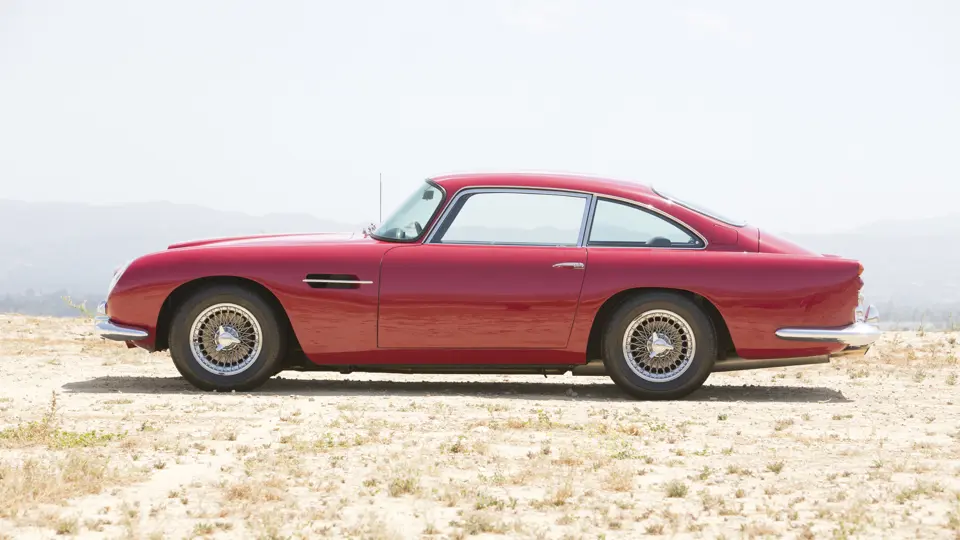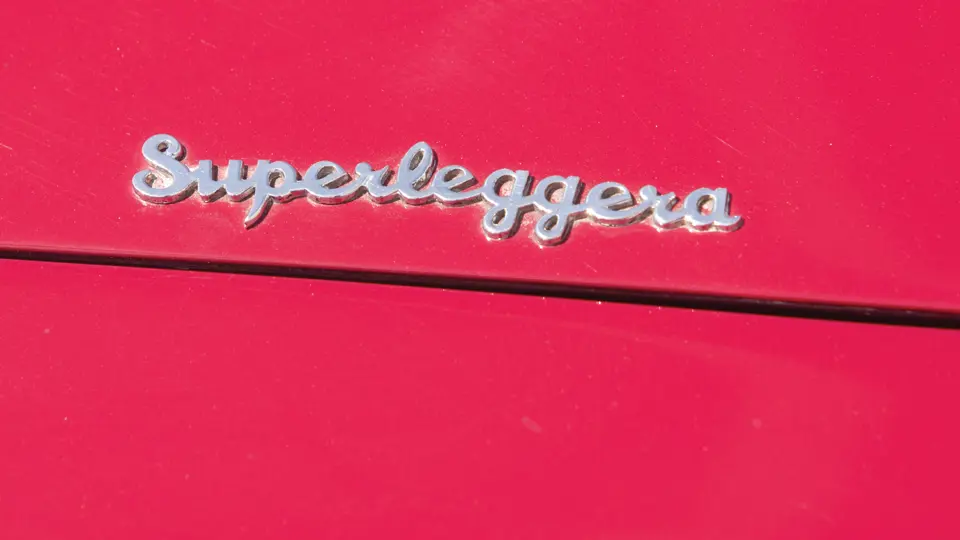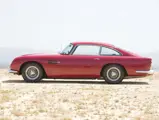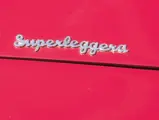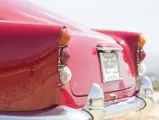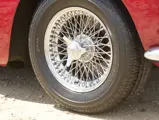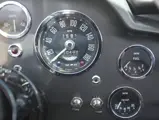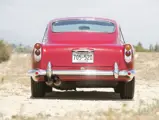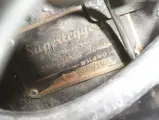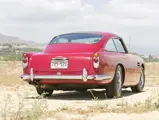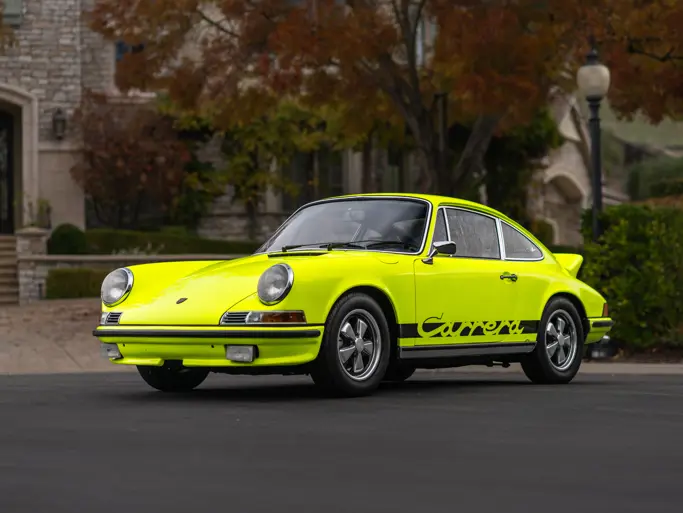282 hp, 3,995 cc DOHC six-cylinder engine with three SU carburetors, five-speed manual transmission with overdrive, independent front suspension by double wishbone and coil springs, rear live axle with trailing arms and coil springs, and four-wheel hydraulic disc brakes. Wheelbase: 98 in.
The DB5 was introduced as the replacement of Aston Martin’s wonderful DB4 in the fall of 1963, and it was the result of lessons learned in producing five different series of DB4. The new DB5 boasted nearly 170 updates and modifications over the outgoing DB4. Even though it received so many upgrades, the traditional Aston Martin look remained. Its stunning bodywork was once again penned by Carrozzeria Touring, and the DB5 retained the same recognizable sloping front fenders with covered, faired-in headlights as the DB4GT, making the car instantly recognizable as an Aston Martin.
The company learned lots of lessons from the DB4, and as a result, they knew that much could be improved upon for their newest model. Although the car maintained the 98-inch wheelbase and pressed-steel platform chassis, the suspension was significantly redeveloped, with the front now adjustable for camber, Armstrong “selectaride” dampers added in the rear, and a dash-mounted control added to adjust the stiffness to the driver’s taste. Engineers also opted to keep the wider track and 15-inch wheels introduced with the Series V DB4, but they chose to replace the Dunlop disc brakes with Girling units. Inside, the layout of the dashboard and gauges was revised in order to include an oil temperature gauge.
The most notable update over the outgoing DB4 was the DB5’s new 4.0-liter engine. This new inline-six, which was capable of producing 282 horsepower, boasted an all-aluminum construction that was coupled with dual overhead camshafts, and it was equipped with triple carburetors as standard. Accelerating to 60 mph from a standstill took 8.1 seconds, and if the driver decided to keep his right foot on the accelerator, the DB5 could reach a top speed of 141 mph. The larger engine also provided an additional 40 foot-pounds of torque over the DB4’s 3.7-liter, making the car slightly more responsive at lower rpms. These performance credentials proved to make the DB5 an excellent grand touring automobile, especially when coupled with a five-speed ZF transmission. The first 50 DB5s were fitted with four-speed transmissions, but the five-speed proved to be an excellent companion to the 4.0-liter engine, making the car a more comfortable highway cruiser but also keeping its performance characteristics intact.
However, despite manufacturing a car that many believed to be better than comparable Ferraris and Maseratis, Aston Martin still remained one of the world’s smallest automobile manufacturers, producing only a few hundred cars a year, all of which were carefully constructed by hand. Their exclusive customer base was drawn to the marque because of its long and successful history of sports-car racing, and they wished to have a sporty grand tourer that boasted a remarkable racing heritage. Just 886 DB5s were produced from 1963 to 1965, working out to be 18 cars per week. The DB5 carried a list price that was roughly double that of Jaguar’s E-Type, but many buyers considered the hefty premium to be worth it.
With the DB5, Aston Martin’s obscurity would not remain for long, thanks to the car’s role in the iconic James Bond film Goldfinger. Even though 007 originally drove Bentleys and an Aston Martin DB MKII in Ian Fleming’s novels, a DB5 was chosen as Bond’s sidekick for the 1964 film. As Goldfinger proved to be one of the most popular films of the year, both Aston Martin and the DB5’s popularity grew with the film. The DB5 would even return for a short role in Thunderball. As a result, Aston Martins would become synonymous with the British secret agent on the silver screen for years to come, but none would prove to be as memorable as the DB5.
According to its Aston Martin build sheet and information provided on its BMIHT Certificate, this left-hand-drive 1964 DB5 was delivered new to Societe Nouvelle du Garage Mirabeau, the Aston Martin dealer in Paris, on March 19, 1964, just six days after it was constructed by the factory at Newport Pagnell. The car was finished in black paint over matching black Connolly leather, and it was optioned with a 3.77:1 Power-Lock limited slip differential, triple SU carburetors, Dunlop tires, two Britax seatbelts, and chrome wheels.
It is known that Bob Pond purchased this DB5 in August 1990, through Art Nisson of British Motor Service, of Orange, California, for $95,000, and it has remained in his collection ever since, finished in its present burgundy over black color scheme. At some time, the car was fitted with an aftermarket Blaupunkt AM/FM radio, which is a welcome addition that would be useful on long trips. Earlier this summer, the DB5 was mechanically serviced by Aston Martin specialists. This service totaled to just under $20,000 and included having the rear suspension radius arms replaced, the water pump replaced, all three carburetors removed and rebuilt, the engine tuned and fitted with new plugs, wires, and filters, and both the clutch and brake master cylinders rebuilt, along with other minor work. Receipts from that service, as well as receipts from a service by British Motor Service shortly before Pond purchased the car, are included in the sale, as is an original owner’s manual. It is important to note that even though this DB5 has been recently serviced prior to the sale, it is advised that further sorting will be required before enjoying it on the road for long-distance touring or extended use.
To many, the DB5 is Aston Martin’s most iconic model, largely thanks to its leading role in Goldfinger alongside James Bond. Its role in the movie helped to make Aston Martin a household name, and it has subsequently turned the DB5 into a motoring icon. To this day, the DB5 is highly regarded by collectors of all types of automobiles, and it is considered by many to be the most iconic British car of its era. It is clear that this lovely DB5 would be a wonderful car, and it is looking for the enthusiast who wants to enjoy British motoring at its best.
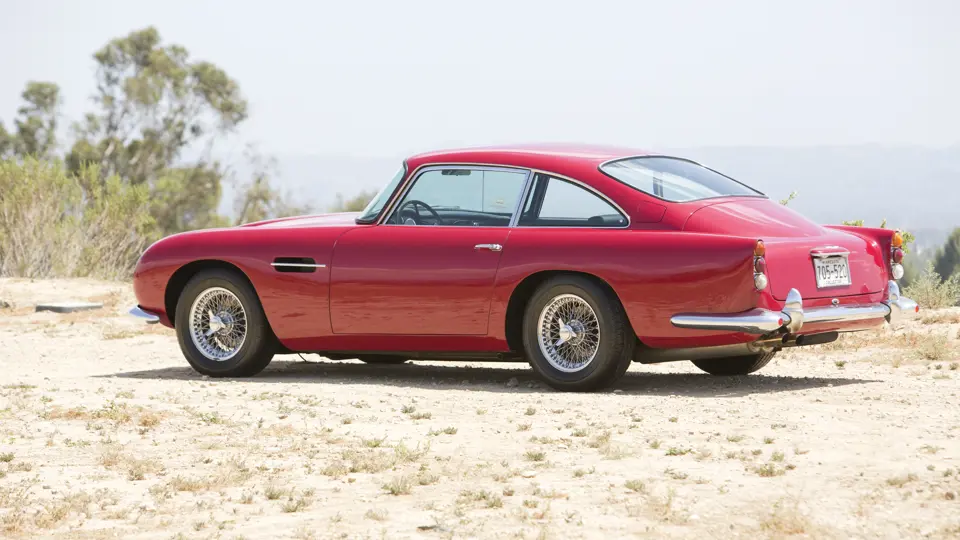
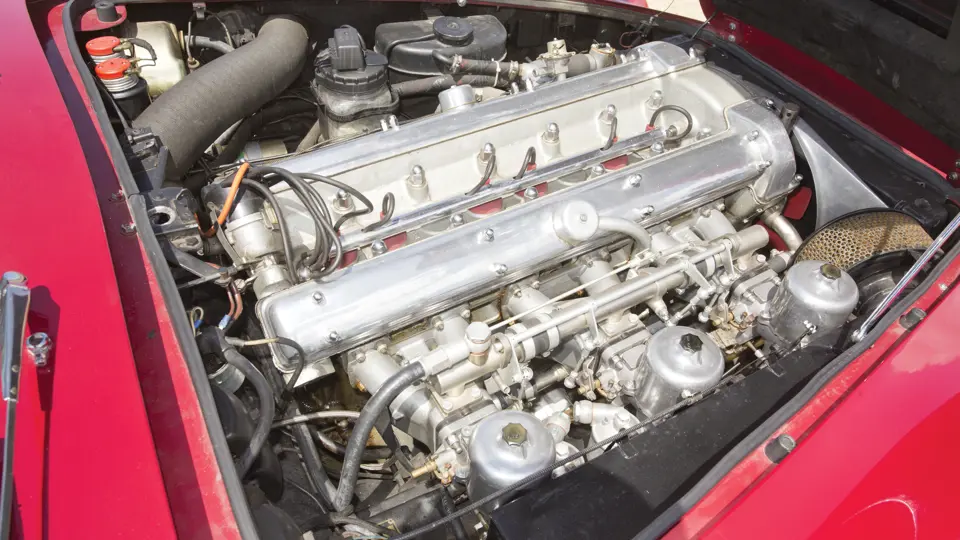


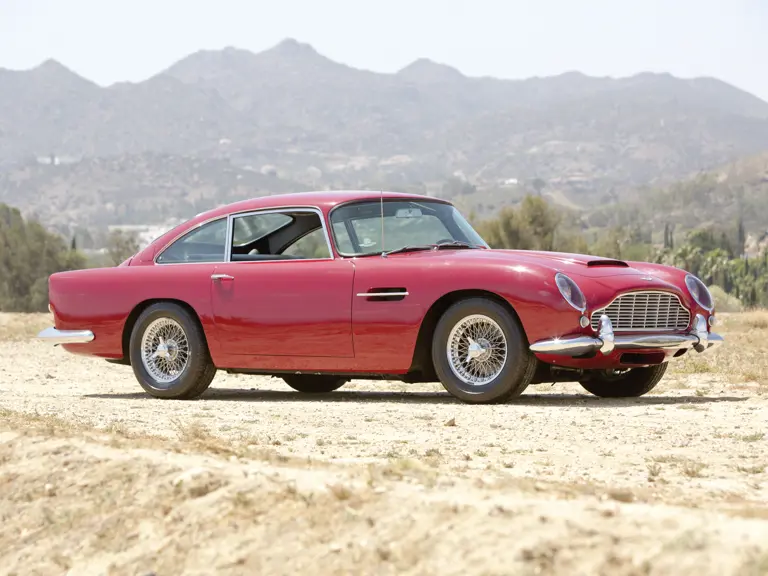
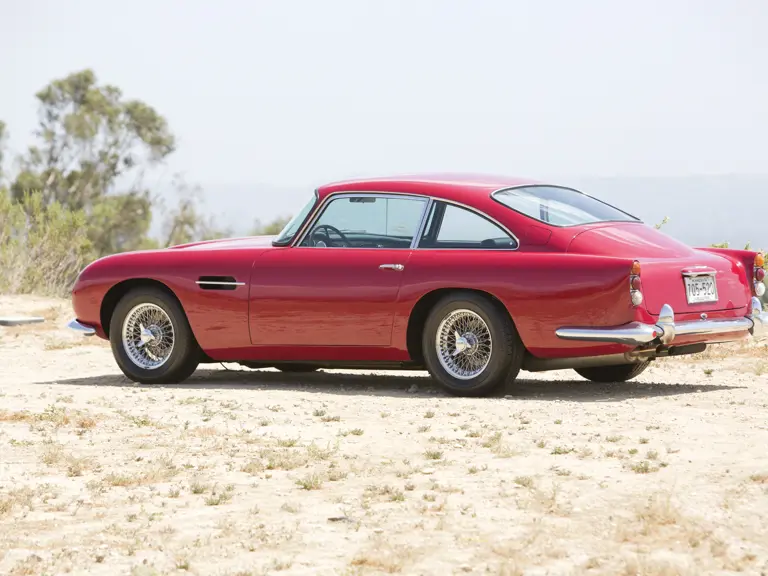
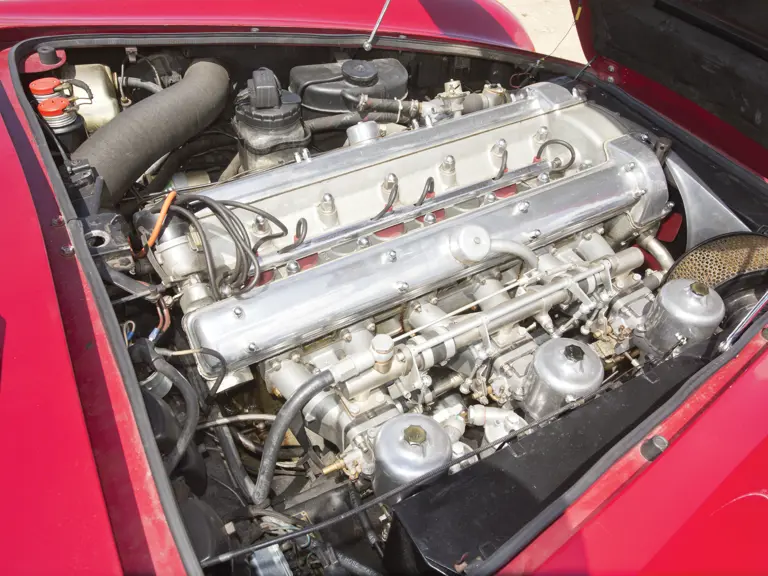





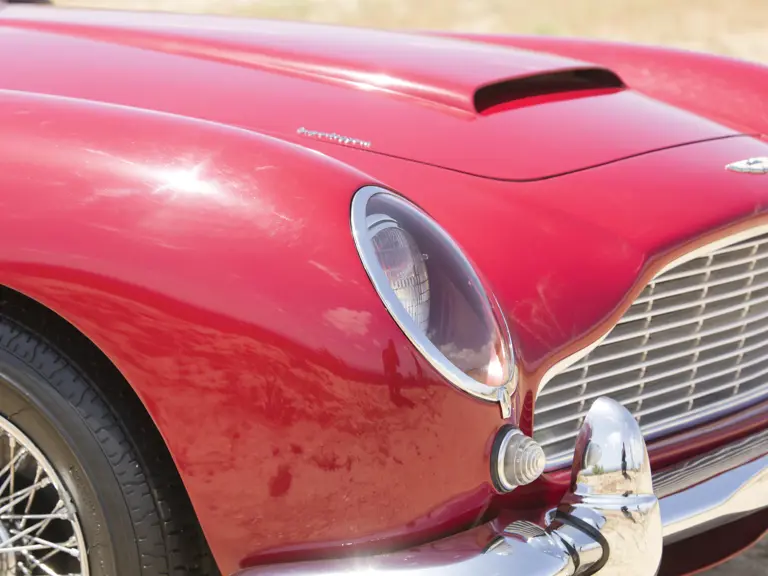

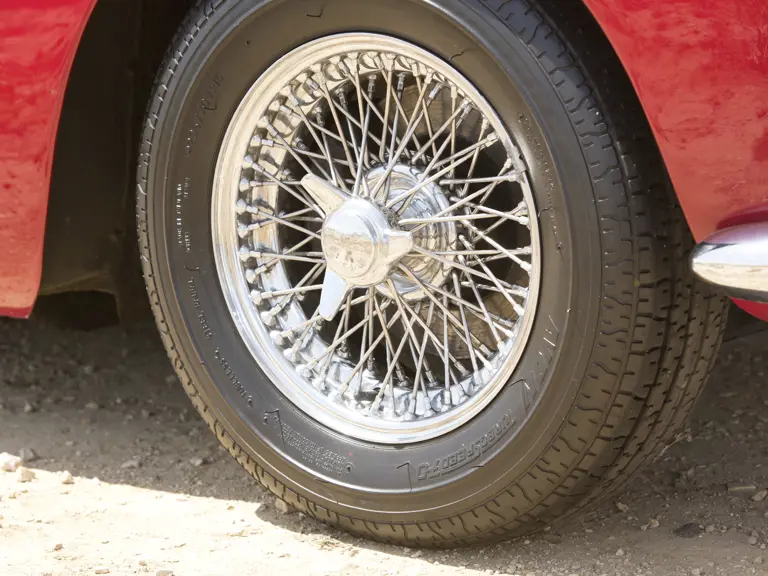
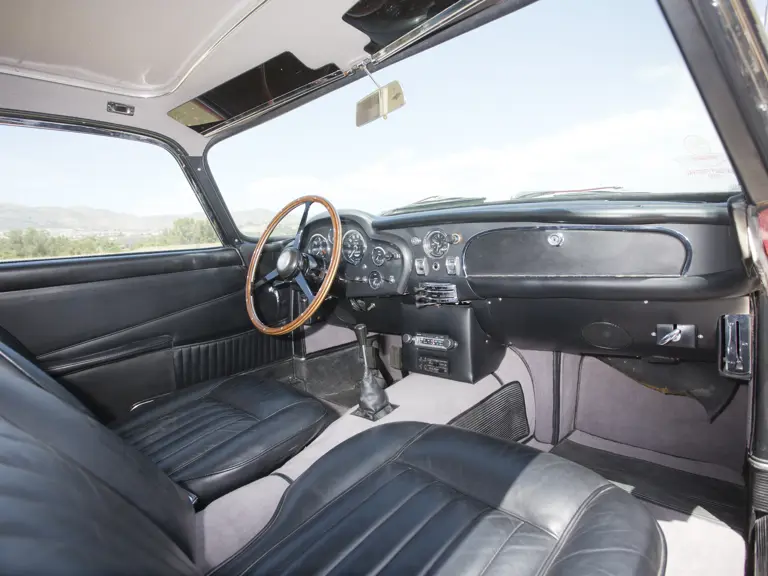

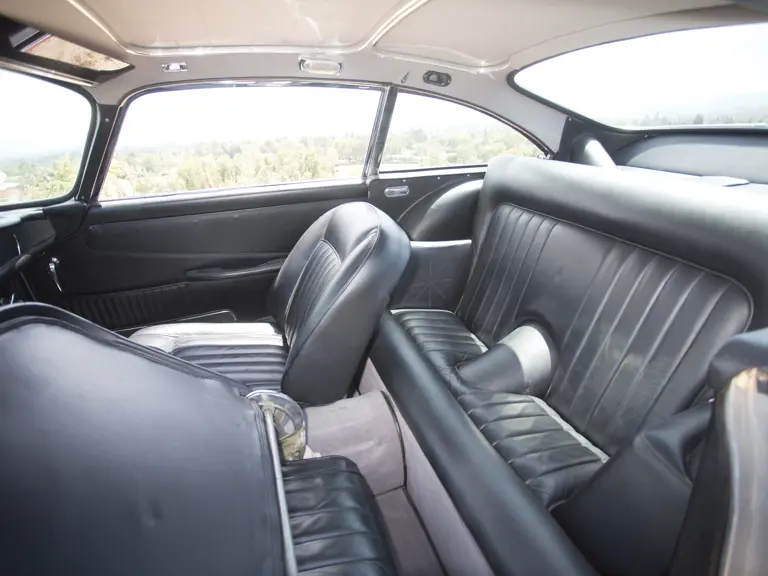
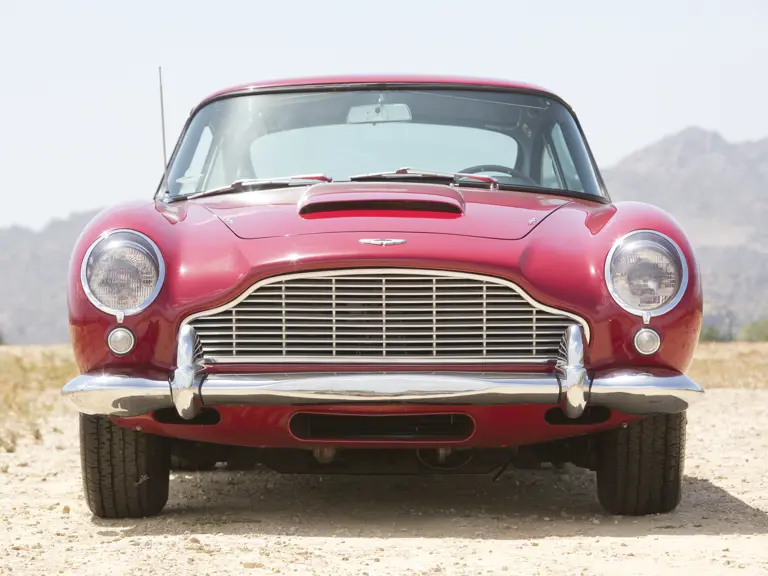
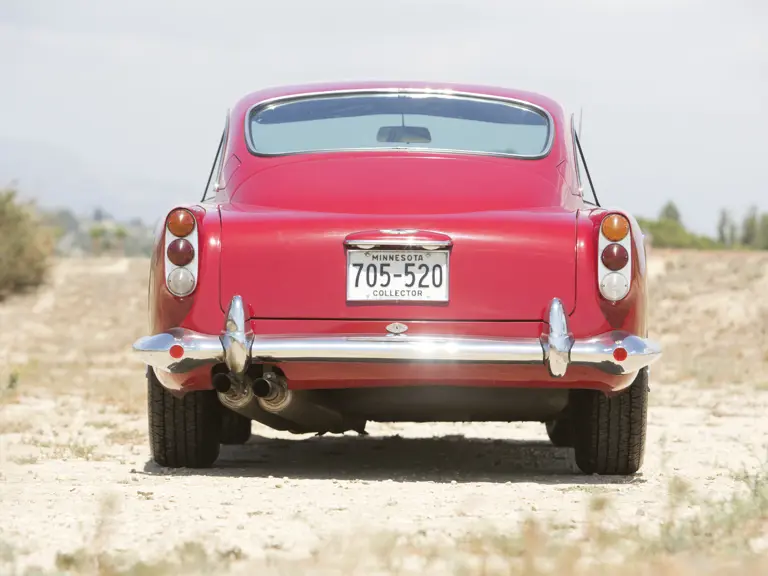


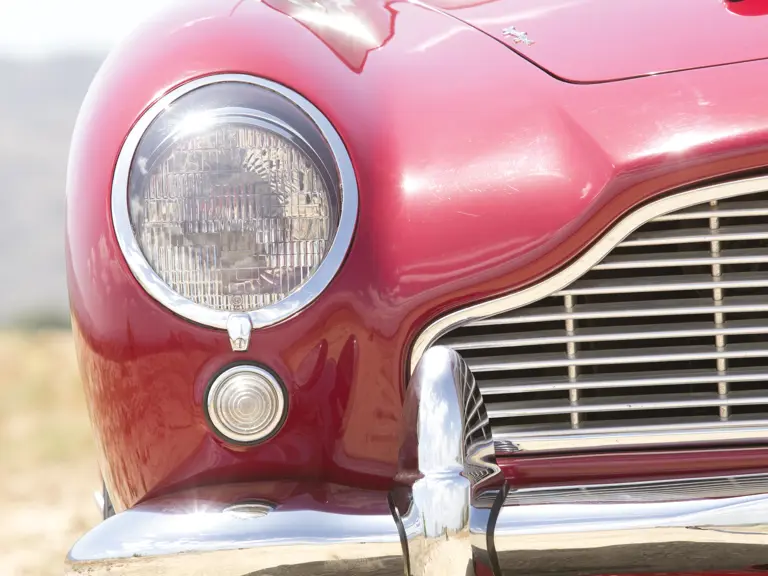
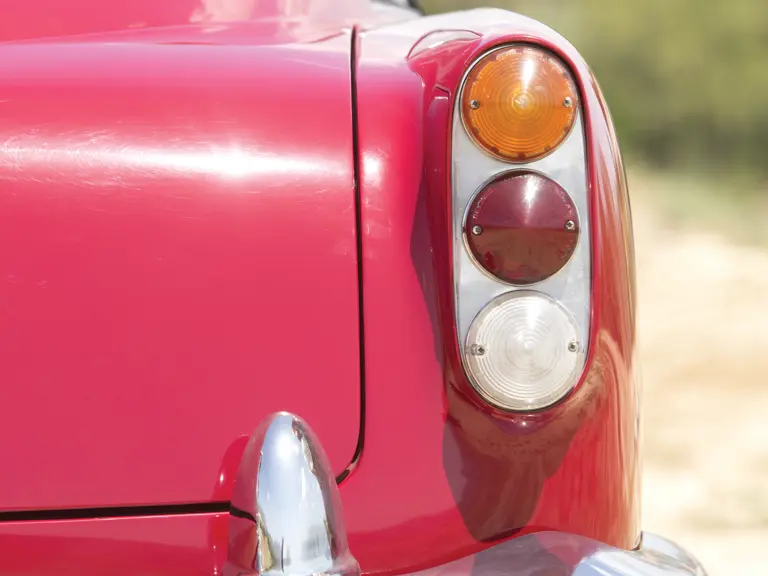
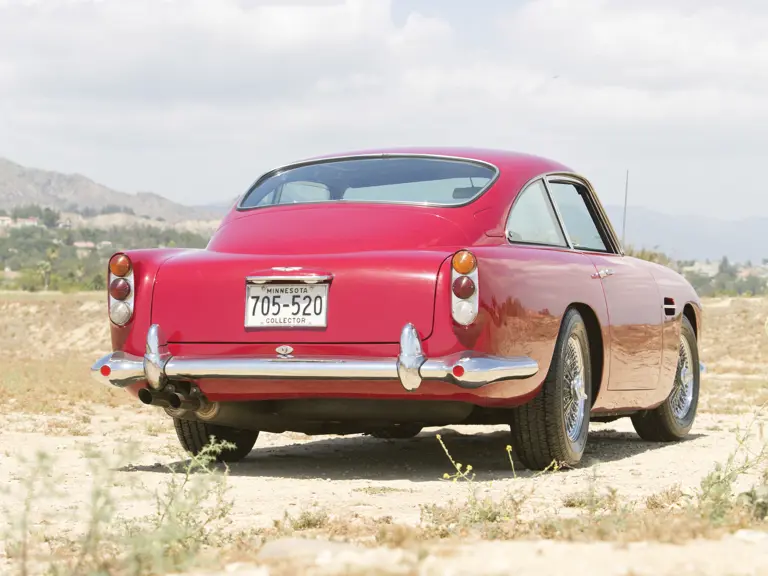

 | Monterey, California
| Monterey, California
